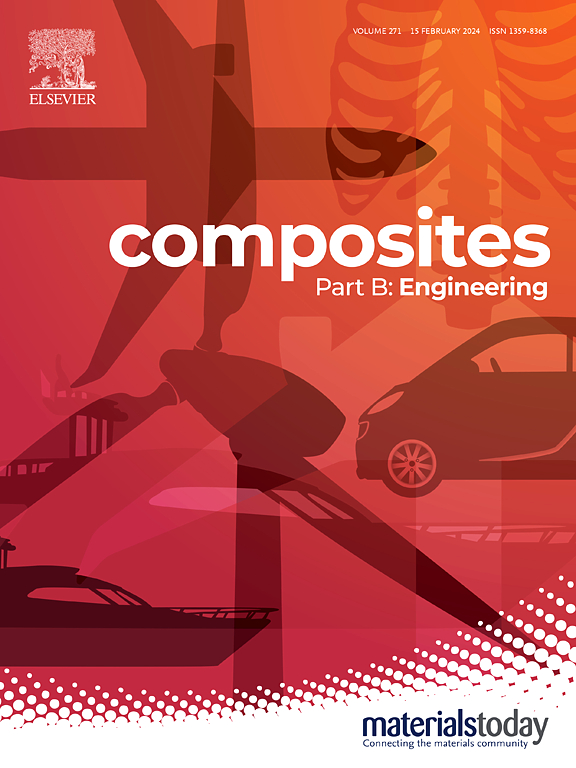An innovative fabrication method of heat sink achieving by selective-orienting co-continuous short fibers network composites
IF 12.7
1区 材料科学
Q1 ENGINEERING, MULTIDISCIPLINARY
引用次数: 0
Abstract
For short fiber-reinforced composite heat dissipation components, designing the local fiber orientation and spatial structure according to heat dissipation principles is crucial for enhancing reinforcement efficiency and improving the performance of heat dissipation devices. In this work, based on the realizing of three-dimensional continuous networks of pyrolytic carbon-short carbon fiber (PyC-Csf) with controllable orientations, we propose an innovative local-global designed and integrated preparation strategy for high-thermal conductive magnesium (Mg) composites heat sink. The tunable local thermal properties of the composites are achieved by adjusting the orientations of the short fibers, and the heat sink is near-net formed by the liquid-solid extrusion following vacuum infiltration technique. The fins and substrate of the heat sink exhibit a thermal conductivity of 101.6 W/m·K and 134.6 W/m·K, which increased by 111.5 % and 180.4 % compared to the Mg matrix, respectively. The TC enhancement is mainly caused by the quasi-alignment fibers in the substrate and planar isotropic orientation in the fins of the heat sink. This work describes a scalable fabrication method for developing metal matrix composite components with thermal conductive selective-orienting co-continuous short fibers network. It highlights the potential of Csf/Mg composites for thermal management and provides an important step toward realizing their actual real-world applications.

求助全文
约1分钟内获得全文
求助全文
来源期刊

Composites Part B: Engineering
工程技术-材料科学:复合
CiteScore
24.40
自引率
11.50%
发文量
784
审稿时长
21 days
期刊介绍:
Composites Part B: Engineering is a journal that publishes impactful research of high quality on composite materials. This research is supported by fundamental mechanics and materials science and engineering approaches. The targeted research can cover a wide range of length scales, ranging from nano to micro and meso, and even to the full product and structure level. The journal specifically focuses on engineering applications that involve high performance composites. These applications can range from low volume and high cost to high volume and low cost composite development.
The main goal of the journal is to provide a platform for the prompt publication of original and high quality research. The emphasis is on design, development, modeling, validation, and manufacturing of engineering details and concepts. The journal welcomes both basic research papers and proposals for review articles. Authors are encouraged to address challenges across various application areas. These areas include, but are not limited to, aerospace, automotive, and other surface transportation. The journal also covers energy-related applications, with a focus on renewable energy. Other application areas include infrastructure, off-shore and maritime projects, health care technology, and recreational products.
 求助内容:
求助内容: 应助结果提醒方式:
应助结果提醒方式:


